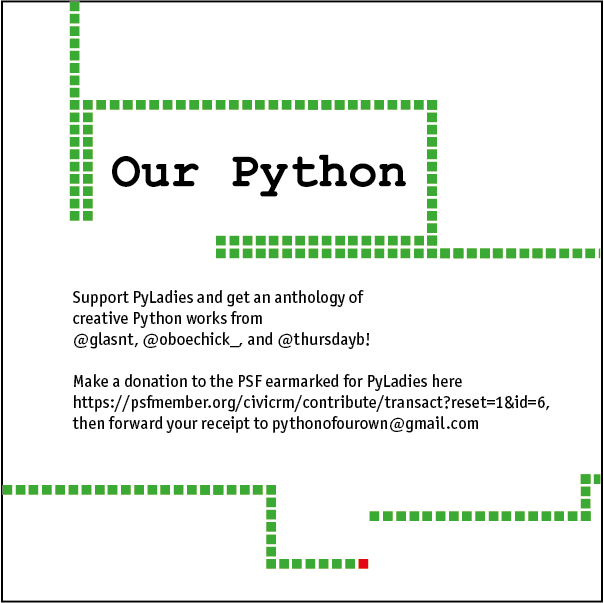A few years back, I wrote a short story set at a Python conference. You can tell I wrote it in the before-times because it involves people hanging out in a convention center in person! That story, “Backwards Compatibility,” was originally published as part of Our Python, an anthology of Python fan works published as a fundraiser for PyLadies.
I finally got around to posting the story somewhere anyone can read it. Since it’s fan fiction, of a sort, “Backwards Compatibility” is now up on Archive of Our Own. While this story is okay for all audiences, you should be aware that Archive of Our Own includes explicit material before you click around too much.
I’m currently the only person who has posted anything to the ‘Python (Programming Language)’ fandom, but you are all welcome to change that. I’m also the only person using the tags ‘Python 2’ and ‘GitHub’ so far. Yes, I am completely fascinated by Archive of Our Own’s mechanics. I’ve written about them in the past and will almost certainly write about them again in the future.
If you read “Backwards Compatibility” and enjoy it, consider donating to PyLadies.
